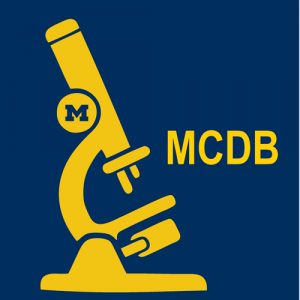Presented By: Department of Molecular, Cellular, and Developmental Biology
Defense: Investigating the Role of Sleep-Dependent Memory Consolidation in Experience Activated Neurons
Brittany Clawson

Sleep is critical for memory consolidation, yet the mechanisms which underlie this process are not well understood. There are two main hypotheses on how sleep promotes memory consolidation: the Sleep Homeostasis Hypothesis (SHY) and Active System Consolidation (ASC). SHY posits that during waking experience, the brain forms new memories – creating and strengthening synapses. Unregulated, this process could reach a point of saturation, which would be metabolically expensive and occlude new memory formation. SHY hypothesizes that during sleep, synapses are uniformly scaled, eliminating weak connections while stronger synapses (important memories) persist. In contrast, ASC postulates that sleep synchronizes neural firing, selectively activating (and strengthening) synaptic connections for specific memories – promoting consolidation. Thus, according to the two hypotheses, different synaptic changes are expected across sleep.
Unresolved discrepancies between ACS and SHY may be due to technical limitations. Until recently, techniques have been unavailable to characterize and manipulate the neurons involved in a specific memory. Experimental outcomes have historically relied on data averaged across the neurons in a given brain structure. This lack of resolution has been a major barrier to understanding how sleep promotes memory consolidation. To move beyond these limitations, this thesis employs both in vivo recording of neurons (allowing tracking of memory encoding neurons across behavioral states) and recently developed engram, or memory trace, tools (allowing us to manipulate the activity of neurons encoding a specific memory). These experimental strategies aim to clarify whether SHY or ASC (or both) occur in primary visual cortex (V1) during post-learning sleep, and whether this consolidation is dependent on sleep-specific memory reactivation.
Using neuronal firing rates as a measure of plasticity, we examined the activity of V1 neurons across sleep, sleep deprivation, and post-learning sleep. The learning paradigm used is orientation-specific response potentiation (OSRP) which manifests as selective increases in V1 neuronal responses to a specific orientated grating. All sleep conditions showed an upregulation in the activity of low firing rate neurons and a downregulation of the activity of high firing rate neurons. These low firing rate neurons convey more visual information and selectively express OSRP. This suggests that sleep selectively upregulates the activity of neurons involved in sensory experience while simultaneously downregulating the activity those that are not.
To evaluate the necessity of memory reactivation during sleep for consolidation, we used engram technology to selectively manipulate neurons activated by a specific visual stimulus. We combined visually-cued conditioning to oriented gratings with engram labelling to create a tractable system for manipulating a specific memory during sleep. We show that the TRAP (targeted recombination in active populations) engram mouse line can be used to drive transgene expression in a specific oriented grating ensemble in primary visual cortex. We then inhibit this ensemble during post-conditioning sleep causing impaired consolidation. This was done in a content specific manner without altering sleep architecture or oscillations - indicating that reactivation specifically is necessary for sleep dependent memory consolidation.
This work unites two long standing hypotheses regarding sleep function for brain circuitry - SHY and ASC. The data support a comprehensive model in which sleep selectively reactivates neurons encoding relevant information. This upregulates their activity, while simultaneously decreasing activity in neurons whose information content is not salient. Future work will be needed to understand the molecular, cellular, and network mechanisms which drive these changes in specific cell populations.
Unresolved discrepancies between ACS and SHY may be due to technical limitations. Until recently, techniques have been unavailable to characterize and manipulate the neurons involved in a specific memory. Experimental outcomes have historically relied on data averaged across the neurons in a given brain structure. This lack of resolution has been a major barrier to understanding how sleep promotes memory consolidation. To move beyond these limitations, this thesis employs both in vivo recording of neurons (allowing tracking of memory encoding neurons across behavioral states) and recently developed engram, or memory trace, tools (allowing us to manipulate the activity of neurons encoding a specific memory). These experimental strategies aim to clarify whether SHY or ASC (or both) occur in primary visual cortex (V1) during post-learning sleep, and whether this consolidation is dependent on sleep-specific memory reactivation.
Using neuronal firing rates as a measure of plasticity, we examined the activity of V1 neurons across sleep, sleep deprivation, and post-learning sleep. The learning paradigm used is orientation-specific response potentiation (OSRP) which manifests as selective increases in V1 neuronal responses to a specific orientated grating. All sleep conditions showed an upregulation in the activity of low firing rate neurons and a downregulation of the activity of high firing rate neurons. These low firing rate neurons convey more visual information and selectively express OSRP. This suggests that sleep selectively upregulates the activity of neurons involved in sensory experience while simultaneously downregulating the activity those that are not.
To evaluate the necessity of memory reactivation during sleep for consolidation, we used engram technology to selectively manipulate neurons activated by a specific visual stimulus. We combined visually-cued conditioning to oriented gratings with engram labelling to create a tractable system for manipulating a specific memory during sleep. We show that the TRAP (targeted recombination in active populations) engram mouse line can be used to drive transgene expression in a specific oriented grating ensemble in primary visual cortex. We then inhibit this ensemble during post-conditioning sleep causing impaired consolidation. This was done in a content specific manner without altering sleep architecture or oscillations - indicating that reactivation specifically is necessary for sleep dependent memory consolidation.
This work unites two long standing hypotheses regarding sleep function for brain circuitry - SHY and ASC. The data support a comprehensive model in which sleep selectively reactivates neurons encoding relevant information. This upregulates their activity, while simultaneously decreasing activity in neurons whose information content is not salient. Future work will be needed to understand the molecular, cellular, and network mechanisms which drive these changes in specific cell populations.